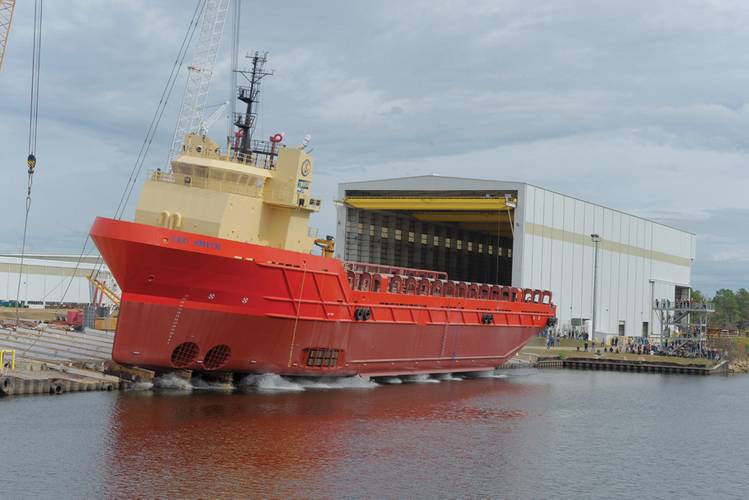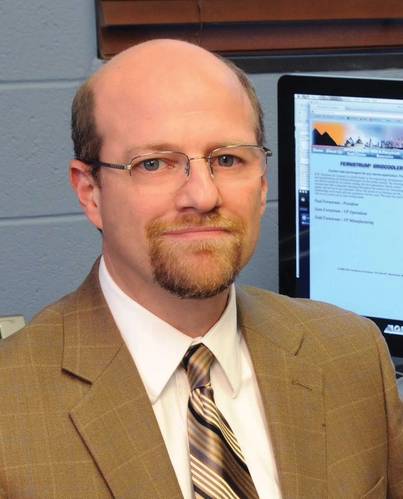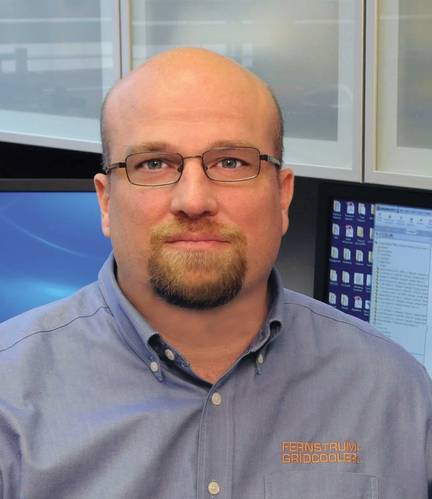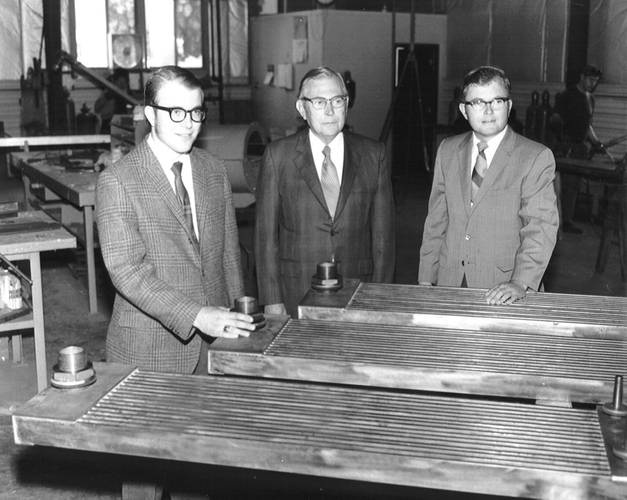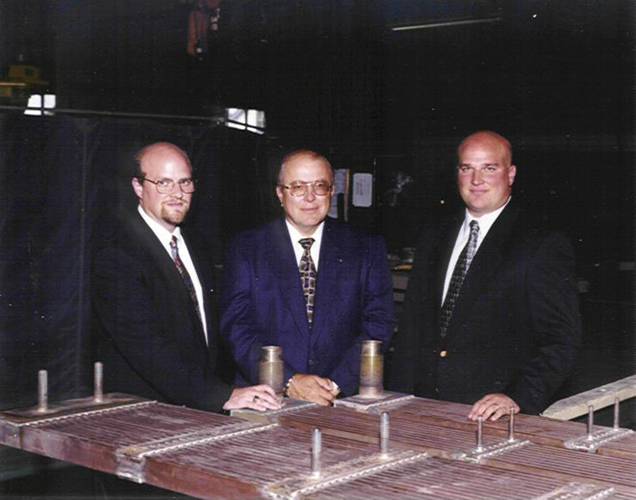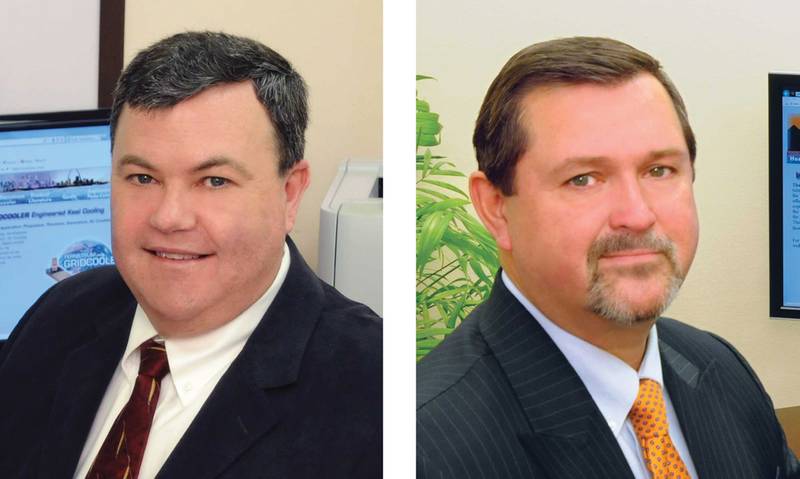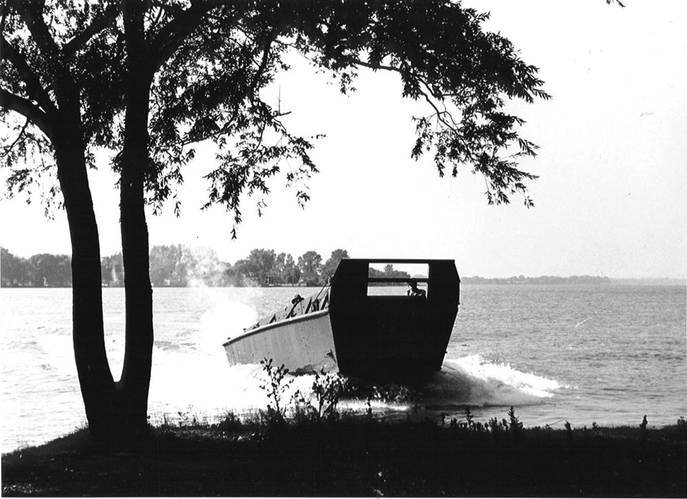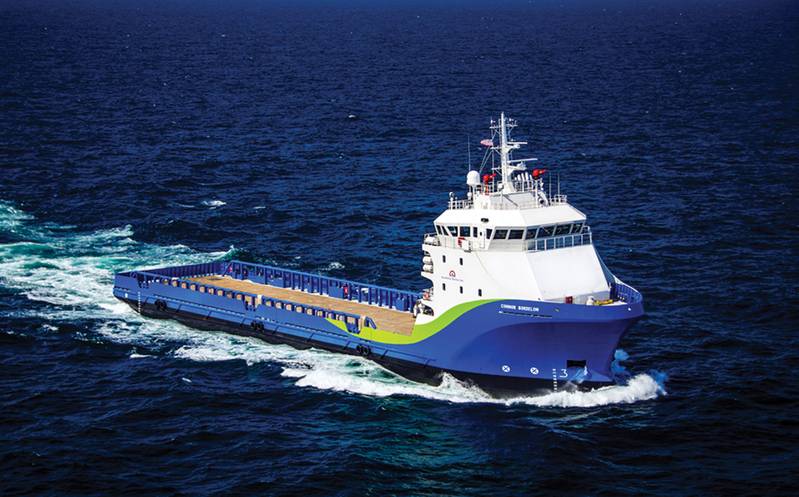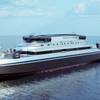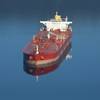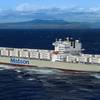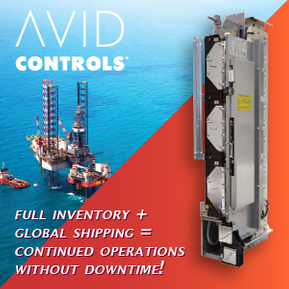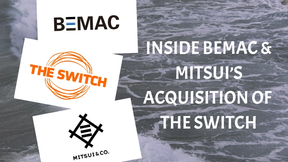Cool Runnings: R.W. Fernstrum's Engineered Solutions
A hallmark of the global maritime industry is the proliferation of smaller, family founded and managed businesses. R.W. Fernstrum is one such company: a ubiquitous presence for more than 65 years providing engineered cooling solutions to maritime and offshore markets. MR went to Menominee, MI, to meet with Sean Fernstrum and his team for insights on the unique products it produces and the markets it serves.
R.W. Fernstrum & Company of Menominee, Mich., is a leader in engineering and manufacturing keel cooling technologies, and today remains a privately held, third-generation company run by brothers Sean and Todd Fernstrum, grandsons of founder Robert W. Fernstrum.
Sean & Todd’s great-great-grandfather was a boilermaker that emigrated from Sweden, working at and eventually purchasing a local boiler shop that in the late 1800s supported the world-class lumber business in the region. The Fernstrum family grew and many of the sons participated in the business, but as Sean explains, his grandfather Robert W. was a born inventor and entrepreneur, and he eventually realized that “there were more boys than business,” so he struck out on his own getting a job as a draftsman with Gray Marine in Detroit.
“When the Great Depression hit, he wanted to keep his job, so he went into his boss and told him that he would come in and work on Saturday’s for free,” said Fernstrum. “He went from a department of 35 draftsman to one. By the time the Depression was over, he had moved up from being an entry level draftsman to being the chief engineer of the company.”
It was here at Gray Marine where the seeds of R.W. Fernstrum were planted, as the company roots started in 1945 when Robert W. Fernstrum patented the first rectangular tube keel cooler with an angled header for the United States Army and Navy. As Fernstrum explained, during World War II the U.S. Navy encountered engine cooling problems with its landing craft – a problem discovered during a mock invasion off of Iceland—and required a new closed circuit cooling system.
“Gray Marine was building landing craft for the Army. When the Army conducted a mock assault of Iceland, less than half of the landing craft made it to shore,” said Fernstrum. “The ice plugged up all of the strainers and it became a nightmare. So the Army went back to Grey Marine and said ‘you’ve got a problem.’ And (the management of Gray Marine) went to its Chief Engineer, my grandfather, and said ‘you’ve got a problem!’ Out of that problem he ended up designing the prototype of our keel coolers.”
So the first real use of the R.W. Fernstrum coolers was on a landing craft, which didn’t actually occur until the conclusion of WWII, but are found on military landing craft from the Korean conflict onward. The company officially got its start in 1949, and expanded its references to include the Army Corps of Engineers then shrimp boats, and today includes a wide variety of commercial craft globally.
Eventually Sean’s father Paul and uncle David joined the business in the 1960s, with brothers Sean and Todd following in the early 1990s, with the pair eventually buying the business in 2000. Today the company employs nearly 40 and stands on the spot where it was founded, with many of its key employees counting their tenure in decades. Today the company’s business is booming globally and it is a true global player in maritime markets from South America to Europe and China, and nearly every stop in between.
Respect the Past, Plan for the Future
“From a personnel standpoint it’s very much the same,” said Sean in explaining how his company’s business has stayed the same over the years. “We have a lot of the same employees here. We’ve expanded in a lot of different areas, but many of the same people, knowledge and experience remain.”
The tandem of Dale Gusick, Export Sales Manager and Frank Bjorkman, Domestic Sales Manager, are good examples, as the pair has led sales for the company for more than 30 years each.
But when it comes to production of its signature products, the business today could not be any more different. “The really dramatic changes have been in production, as we could not have dreamt of the things we’re currently doing now,” such as flexibility in design, double stacked units and use of materials such as aluminum versus strictly copper nickel, said Sean.
Specifically he attributes capability and productivity gains to engineering software solutions. In addition to enhancements to the products, it has exponentially sped along the process by which the company is able to offer recommendations on sizing, for example, from a process that took an hour or two and brought it down to five minutes.
An Engineered Solution
Like many of its manufacturing brethren, R.W. Fernstrum has a near fanatical obsession with quality and control, as Bjorkman explains most succinctly: “People have expectations, and one of their expectations is that we beat their expectations.”
Easier said than done, particularly when you consider that nearly half of its business is custom work. “A lot of what we do is not standard; about 30 to 35% of what we do every day in the shop is custom work,” said Bjorkman. “We are not simply building standard coolers, we’re delivering engineered solutions.”
To that end, the process starts well before anything takes place on the shop floor, starting with the procurement of the highest quality materials at the most favorable prices; no small feat for any manufacturing company and a challenge taken on daily by Todd Fernstrum.
“Material quality, testing and verification is paramount to the overall success of the Fernstrum products,” said Todd Fernstrum. “There have been some real challenges in the past few years in getting some of the materials. There are some things that we can order a mill quantity at a time, but there are some materials that we get on a shorter basis.”
He said the main challenges in recent years have centered on consolidation in the metals market, as with some metals there may be only one or two suppliers globally. “For example you can’t get brass plate in the U.S. Nobody makes it; it all comes out of Germany or Asia.”
Once material is in hand, R.W. Fernstrum prefers to do as much of the work on the material in-house, as a matter of quality control.
“The big thing is being hands on, we want to control the quality and timeliness of getting the parts that go into these coolers,” said Bjorkman. “We bring the raw material here, and we make all, or the vast majority of all of the parts ourselves. We’re doing the threading, we’re doing the punching, we’re doing the forming. We do it all in house. We want that kind of control for a number of reasons; it’s a quality thing going right down to the threading on those bolts.”
Riding the Maritime Wave
While more than 90 percent of R.W. Fernstrum’s business is in the cyclical maritime sector, Sean Fernstrum and his team take a long-term approach in all that they do. “I don’t worry too much about market share percentages, I worry about getting the business, and it has been a banner year. In fact, we’ve had two banner years in a row. Last year (2012) was our best year ever, and this year (2013) was better than that,” said Sean Fernstrum. “But it is a cyclical business, and generally you have three to five years up, then three to five years down. It doesn’t vary a lot from that, and that’s the way it’s been for 65 years.”
While the company is diverse in the markets it serves, Bjorkman said “A lot of our business revolves around the oil business, and the construction of offshore supply vessels. When they’re building boats we’re busy. Also, the inland pushboat market is a contributor, which has been very busy of late. Bottom line, a lot of our business is dependent on what’s happening in the (Gulf of Mexico oil) patch, and right now, things are looking very good.”
Part of the company’s long-term success is built on expanding R.W. Fernstrum’s business by world region, a task headed by Dale Gusick. Today international sales contributes about 25% to the bottom line.
“Looking at the world, the area that holds the most potential for us in the next five years is South America,” said Gusick. “But there are questions, such as are they ever going to release the money to buy everything that they have talked about? I have no idea.”
“We’ve got several projects: one is for 20 pushers for Transpetro, an order we’ve had for almost two years and the last 16 months they haven’t done a thing with them. We’re monitoring the market and if it can keep moving for the next five years, that probably holds the biggest overall potential for us worldwide.”
R.W. Fernstrum is hardly alone in its wait for Brazil to fully develop its potential, and its long-term view on markets and patience help in these cases. In the meantime, Gusick said there have been pockets of prosperity in other South American locales, including Paraguay which he said “is coming on line and just exploding right now with two or three yards building pushers. In addition, several owners from Argentina, Brazil and Paraguay are looking to build pushers in Turkey and other countries to operate in the home markets.
We’re also starting to see some good things happening in Australia and New Zealand for fast ferries and smaller workboats. Germany has always been a good market for us, as we have a number of coolers going into Fassmer at the moment for their Search and Rescue and Police boats, high speed vessels.”
Belts vs. Suspenders
While R.W. Fernstrum’s history is firmly founded in its signature grid cooler, it has had a contract to build WEKA Boxcoolers for more than 18 years in what has been a natural progression of its business. When asked to describe the inherent difference between grid and box coolers, Sean Fernstrum made it simple: “It’s really belts versus suspenders. What do you like?”
Box coolers are mounted inside of the hull in a sea chest, which is good for the protection of the unit. On the other hand it consumes valuable interior space and presents some buoyancy issues.
Grid coolers, on the other hand, don’t consume internal space or cause buoyancy issues, but its external mounting can demand some guarding around the unit on the hull.
“That’s really what it comes down to, as they are both proven closed cooling systems. The box cooler is a system developed in Europe, so it’s more common there. Where as here in the U.S. our grid cooler product line is more common. They both work, they both have their plusses and minuses. It comes down to preferences.”
Regardless of preference, the trend toward increased machinery cooling onboard all vessels is growing exponentially, driven by a number of factors, including a new EPA & IMO tier level ratings for marine engines, the proliferation of diesel / electric solutions and the need to draw full power while dead in the water for DP operations, and the trend toward building boats capable of worldwide operation, hence building for a much broader temperature range and the need for more cooling capacity onboard.
“The tier levels on the engines are driving all of us” said Sean Fernstrum, explaining that there is a requirement for colder temperatures for the after coolers and charge air circuits. Some of the bigger OSV may have 20 to 25 coolers onboard, and “the way they are trying to generate power now, using a smaller frame engine block, the only way to get more power out of that block is to have a colder temperature to charge air circuit. The colder that charge air circuit can be, the more power that block can generate, and these EPA ratings requiring colder and colder temperatures is one of the things driving the double stack coolers.”
In addition to the main engines, diesel electric propulsion systems have requirements for cooling many different types of systems onboard OSVs, starting with the bowthrusters and going to and through the DP systems.
In fact with the proliferation of diesel electric propulsion systems (which is now infiltrating the push boat market) and the changing emission requirements, Fernstrum has become an intelligence base for designers, helping to re-engineering the cooling systems when owners move from Tier 2 to Tier 3 units, for example. “I think that is one of the things that have made us very successful,” said Sean Fernstrum. “We really watch these tier ratings and watch the engine data and we alert the yard or the owner or the architects. We have developed a real trust, and they like coming to us as a double check.”
While keeping ahead of ever moving markets and technical issues is challenging enough, Sean counts continuing the Fernstrum lineage as a prime area of challenge, too. “Succession planning is a big one for us. We have the double edge sword of a lot of experience here, and a lot of experience takes a lot of time to develop. People don’t work forever, people don’t live forever. You have to make allowances to bring new people in, give them the time to learn the business, learn the industry, to maintain that level of expertise and service, so there is not any major hiccups when personnel change takes place.”
(As published in the April 2014 edition of Maritime Reporter & Engineering News - http://magazines.marinelink.com/Magazines/MaritimeReporter)












